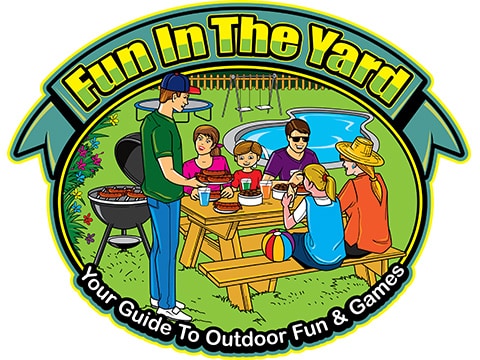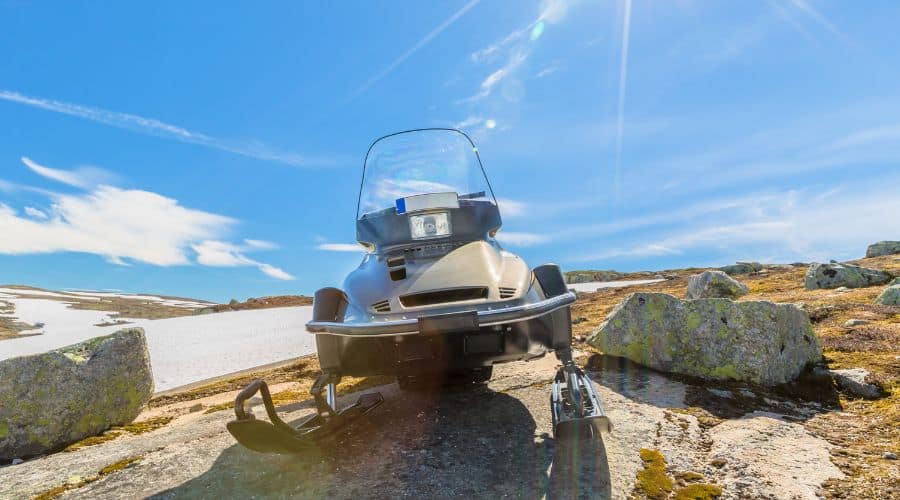If you want to start a snowmobile after the summer, and you haven’t been doing upkeep on it, then you’re going to need to take a few extra steps to get your sled cleaned up and running again.
Unfortunately, snowmobiles don’t magically start after months of disuse. Fluids like gas don’t last forever. What is the best way to start a snowmobile after summer? I’ll walk you through the steps.
The best way to start a snowmobile after summer is to:
- Drain Fuel And Inspect Fuel Lines For Leaks
- Replace Air Filter And Fuel Filter
- Change Spark Plugs
- Lubricate Cylinders
- Remove Choke, Throttle Cables & Float Bowl And Clean The Carburetor
- Inspect Air And Exhaust For Critters
- Warm Up Engine Slowly
Table of Contents
How To Start A Snowmobile After Sitting
It is not a good idea to cold start a snowmobile that has been sitting. Especially if it’s been months, or you are purchasing a sled that was in storage, you need to inspect everything.
Right before the season begins is an ideal time to clean out all the various parts and perform an in-depth maintenance check.
By taking the time to look everything over thoroughly, you can help avoid engine damage and unnecessary wear.
Engines aren’t meant to sit idle for too long, and you will want to know if you have air, water, or sediment anywhere in your system it shouldn’t be.
Always clean or replace any rusted or corroded parts before trying to run a snowmobile.
The list below will show you the steps to start a snowmobile that’s been sitting.
1 – Fuel and Fuel Lines
It is never a great idea to try and start a snowmobile with old fuel sitting in the tank.
Instead, you should drain out any fuel that was sitting dormant for weeks or months. Take this opportunity to inspect your tank, seals, and fuel lines.
Replace any rusted, leaky, or otherwise damaged parts.
Once you’ve finished clearing everything out and placing any new fuel lines or parts, you can refill the tank.
Choose a fuel with an octane level not lower than 87 and generally no higher than 91.
You also want to ensure there’s little to no ethanol, so shoot for an E10 or less. Cleaner fuel will burn better.
2 – Filters
Your fuel and air filters are probably not the first things you think of when you’re ready to start your snowmobile up again at the end of the summer.
However, keeping your filters clean and in good condition can help your snowmobile run better all season. There’s no real trick to this.
All you need to do is pull out the old, dirty filters and slot in new, clean filters.
3 – Spark Plugs
Check and clean your sparkplugs before ever putting the key in the ignition.
Spark plugs take the stored energy from the battery and use it to start the combustion process in your engine with a literal electric spark.
In fact, they spark anywhere from 400 to over 1400 times a second. If your spark plugs show signs of wear or corrosion, I recommend replacing them immediately.
Keep a pack of NGK 7788 (BPR9ES) Spark Plugs in your garage, and you won’t have to worry about spark plug problems. These durable, easy-to-install plugs come in a convenient 10-pack.
- Includes (10) BPR9ES Spark Plugs.
- New, Bulk Packed.
- Genuine OEM NGK Replacement Part.
- Consult owners manual for proper part number identification and proper installation.
- Please refer to list for compatibility.
Last update on 2024-04-25 / Affiliate links / Images from Amazon Product Advertising API
4 – Cylinders
Since you are removing the spark plugs to clean them, this is the best time to lubricate your cylinders.
For snowmobiles that have sat dormant for a while, not only will gravity slowly pull the oil away from where it’s needed, but they can get locked up.
Try using transmission oil or WD40 when things don’t want to move.
Leave the oil there for at least 2-3 days. When you return later to get things going, the oil will slowly have seeped into the spaces to get things lubricated. The engine should turn over with no problems.
5 – Carburetor
Cleaning your carburetor once a year when the season begins should be on every sledder’s list.
Typically this involves removing the air box, so set that aside for the next step. Remove the choke, throttle cables, and the float bowl to reach the internal components.
I recommend checking out this video by Dabblin’ with Dan. They walk you through the process of opening up a carburetor and cleaning the parts.
I prefer Johnsen’s 4641NC-12PK Non-VOC Compliant Carburetor Cleaner Spray from Amazon.
This spray has no Volatile Organic Compounds, and its oxygen sensor safe. Johnsen’s offers various blends of this excellent carb cleaner to comply with the laws throughout the US, but this one is considered safe in all 50 states.
- Package Dimensions: 28.194 cms (L) x 22.098 cms (W) x 28.194 cms (H)
- Product Type: Auto Accessory
- Package Quantity: 1
- Country Of Origin: United States
- Flash point: -29.0 degrees_celsius
Last update on 2024-04-25 / Affiliate links / Images from Amazon Product Advertising API
6 – Air and Exhaust Critters
Before attempting to start a snowmobile, I always recommend doing a critter check.
Although the chances of mice or other creatures making a home in your sled get higher the longer it sits unused, small animals searching for warmth can take up residence overnight.
Since you took the airbox off in the previous step, you can begin by checking the box over visually for any debris or signs of animal droppings or nest materials.
Next, you need a flashlight and a long thin wire. First, look in your tailpipe with a small flashlight to see if there are apparent signs of animals going in and out.
Using the wire to ensure the pipe is clean, you can carefully probe just out of sight.
7 – Running The Engine
Once you have drained and replaced your gas and given your snowmobile a comprehensive once-over inspection and cleaning, you are ready to start it up.
Make sure you’ve buttoned everything up and put back all the parts you pulled out of your sled, down to the last screw.
Close the engine and clear the space around you of any debris or tools you may have collected while you serviced your snowmobile.
The next bit is the easiest and most anxiety-inducing part of turning on a snowmobile that has been sitting for a while.
Put the keys in and turn your snowmobile on. If you’ve done everything right, and there are no unseen problems, you should be able to start it right up and get moving.
Pro Tip: Go slow and take your time. Don’t try to gun the throttle and tear out of the garage the second your machine turns on. Instead, set it on a low idle for a minute, ease it out, and let the engine go through its paces at a lower speed first. Giving the engine time to warm up is important, but you also want to discover any leaks or other unpleasant problems at a low speed near your home rather than five miles down the road.
Helpful Tips To Know About Starting A Snowmobile After Summer
If you live in an arid environment with hot summers, your snowmobile will likely need more TLC than it would in a moderate or cool area.
Heat can cause seals to dry out and crack, among other engine problems that go unnoticed when the sled is sitting around waiting for the next snowy season.
Here are a few more helpful tips to know about starting a snowmobile after summer.
- It’s best not to leave your snowmobile sitting for long periods without turning it on once in a while. You’ll find it much easier to restart your snowmobile in the autumn if you run it about once per month in the off-season. Doing this prevents sediment from settling in your engine and keeps seals lubricated.
- When inspecting or cleaning any part of your snowmobile, ensure the machine is off, and the keys are out of the ignition.
- If your snowmobile doesn’t start after sitting for a season, you may be dealing with a dead battery. Even a big 12-volt will lose its charge after a while. You may be able to restart the dead battery with jumper cables and another (working) vehicle. Remember to run both vehicles in a well-ventilated outdoor area for about fifteen minutes after jumpstarting your sled.
- Check your manufacturer’s recommendations. You may want or need starter fuel to run a snowmobile after it’s been sitting all summer. However, not all snowmobiles require this step, and you should always go with what the manufacturer or mechanic says.
Final Thoughts
Everyone makes mistakes, and letting a snowmobile sit for a few months during the off-season isn’t the worst thing you can do, but it’s not beneficial for the sled.
The best time for an annual maintenance appointment or DIY day is when you’re ready to turn on your snowmobile at the end of summer.
Depending on the model and how long it sat, you may need some starter fluid or additional replacement parts like rubber seals and gaskets.
Expect to disassemble and clean several parts before your ride is ready to tackle this year’s snow.
If you take the time to turn on your snowmobile about once per month during the off-season, you can prevent some problems like dry seals, but you still need to service and clean your sled before the cold season hits each year.



